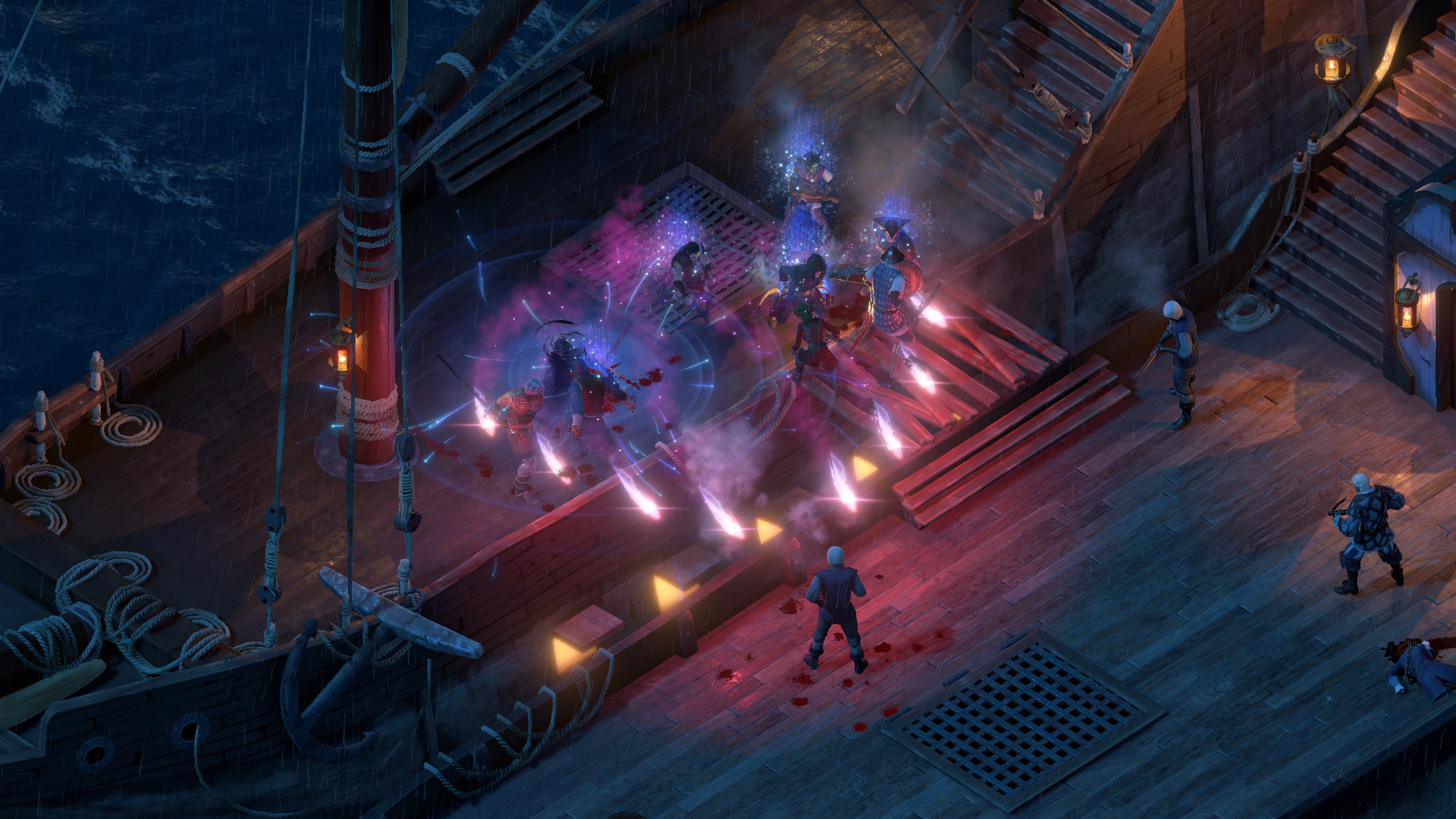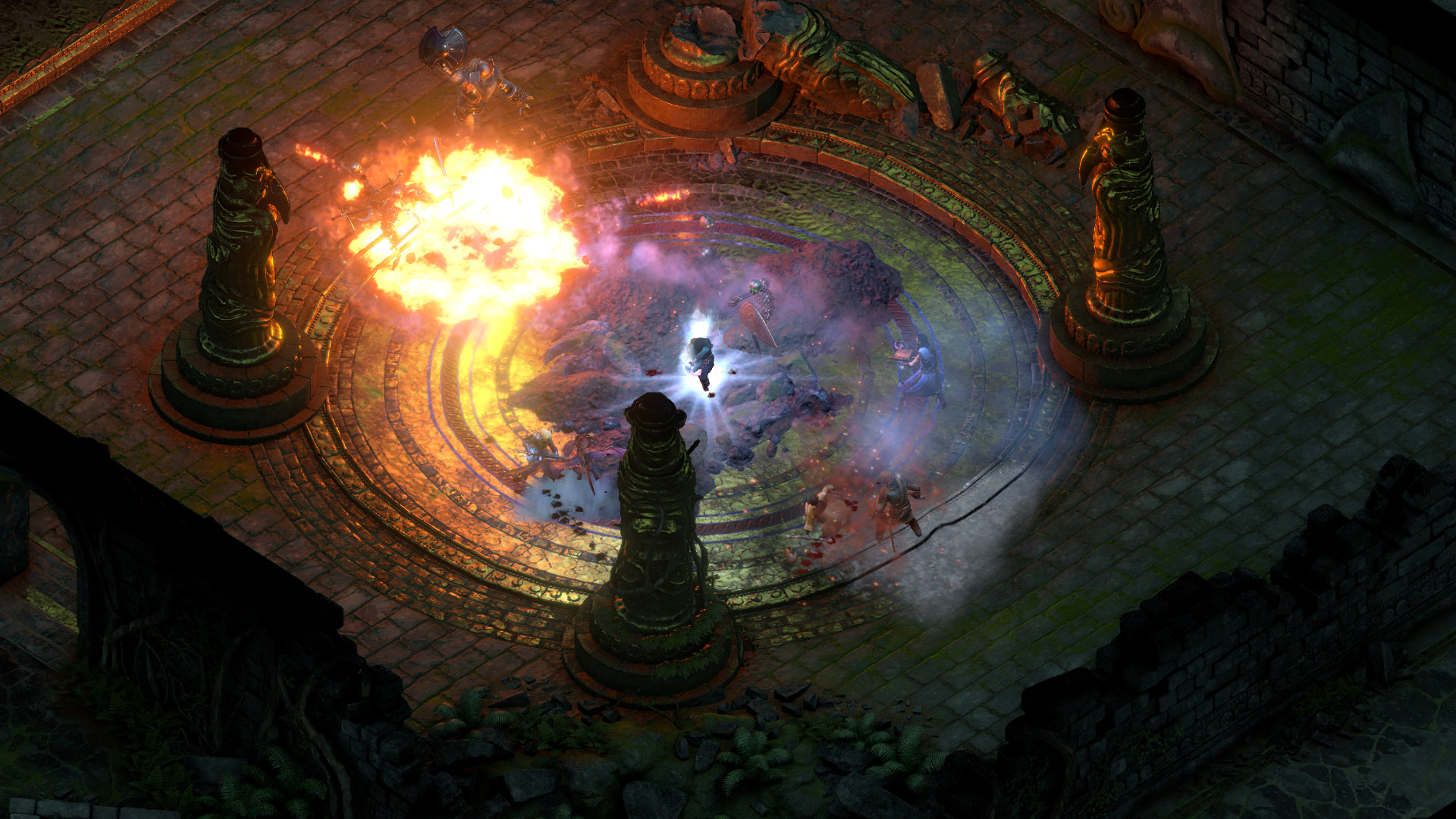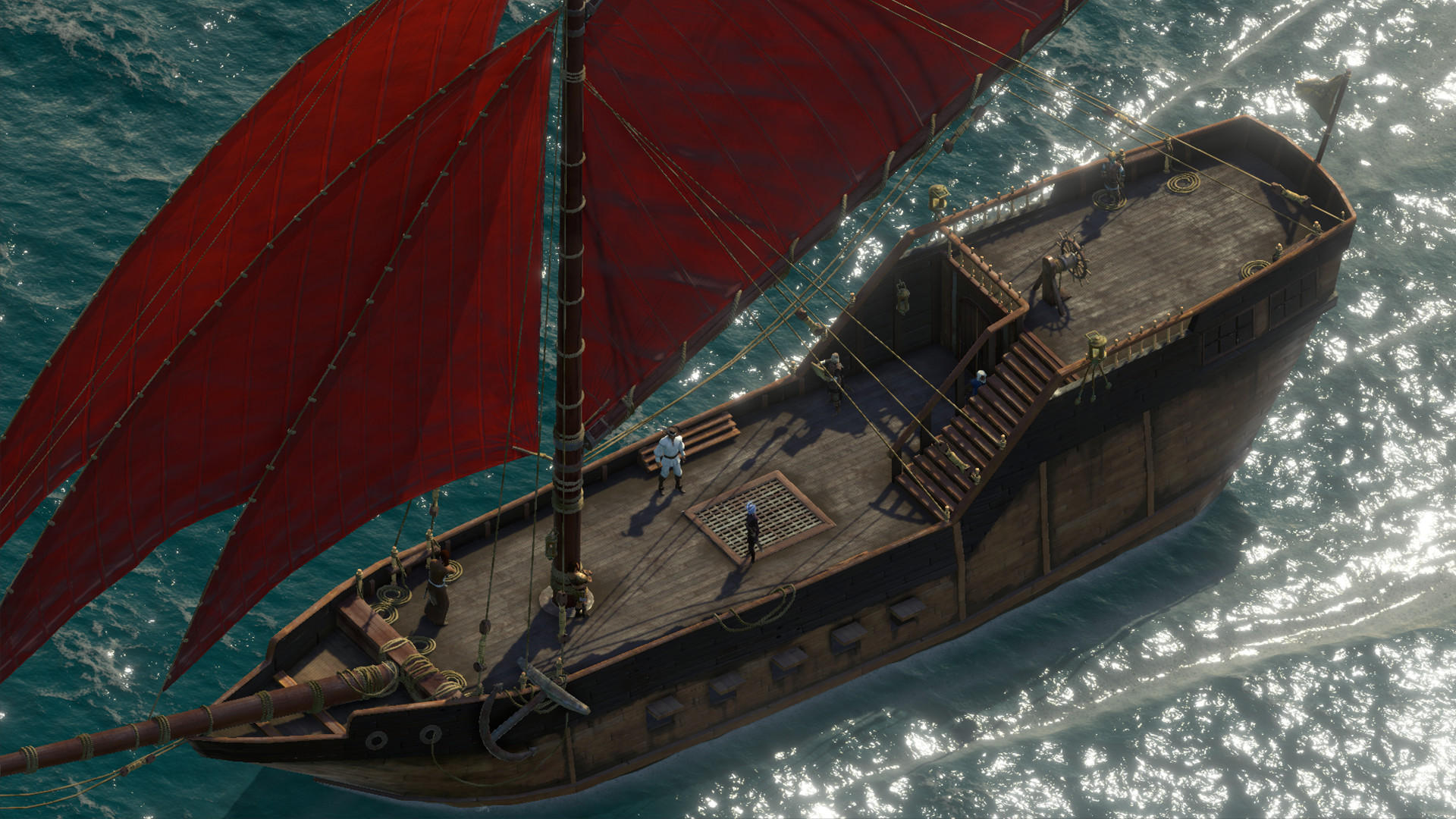
In an industry that’s mostly driven by ever-increasing budgets, extensive production schedules spanning the globe and tried and true yearly franchises, the existence of studios like Obsidian Entertainment has continuously sparked interest. From the days of developing a high-end IP for Microsoft to creating beloved sequels to hallowed series like Fallout and Star Wars: Knights of the Old Republic, Obsidian’s existence feels like an anomaly at times. Case in point, the fact that games like Pillars of Eternity exist and continue to receive funding is also interesting. Pillars of Eternity 2: Deadfire isn’t a sequel that’s simply looking to add on to the original but instead expand on it. The result isn’t just a game that lets one build upon their previous heroics but embark on a new enthralling adventure, one with new roads and morally intriguing dilemmas.
"It’s all fairly bog-standard for an old-school RPG but the degree of customization is nonetheless appreciated, making one’s avatar stand out all the more."
Following the first game’s events, the player character aka The Watcher has retired to Caed Nua to live out life in peace. It doesn’t take long before Eothas, the god of light, suddenly emerges from the stronghold’s ruins, possessing a statue and absorbing the souls of those nearby. Eothas also takes a rather large chunk of the Watcher’s soul, returning our hero back to the Wheel and where eventually they arrive in the In-Between. There you’ll meet Berath, a divine figure that will help bring you back to life but requires help in understanding Eothas’ intentions. The link between The Watcher and Eothas draws them together and after reviving on your ship with allies nearby, the pursuit begins.
From the outset, you can decide on The Watcher’s actions and results from the first game (including an option where everything went completely wrong). However, there is an option for crafting an even more detailed history, right down to the gods followed and whether those Hollowborn souls were returned to the Wheel or sentenced to oblivion. Character customization is next and while the first game was fairly good with its options, Pillars of Eternity 2: Deadfire feels just as robust, if not more, in terms of appearance.
Numerous hairstyles, hair colour options, character portraits and voice options exist to fully customize your Watcher. Of course, the game’s robust class creation allows for either creating a single class with subclass options or going with a multi-class and sub-class for even more diversity. That’s not including options for races, sub-races, starting weapons, one’s birth place, profession and so on. It’s all fairly bog-standard for an old-school RPG but the degree of customization is nonetheless appreciated, making one’s avatar stand out all the more.
"As a game, Pillars of Eternity 2: Deadfire is decidedly more old-school than something like, say, Divinity: Original Sin 2."
Though Obsidian Entertainment has been praised for its writing, most especially in Fallout: New Vegas, I often found the writing in Pillars of Eternity to be a little too verbose at times. Pillars of Eternity 2 echoes those concerns at times but for the most part, it strikes a fine line between descriptive and concise. Though some characters, like Governor Clario in the early going, can seem a little too talkative, that’s also backed by some great voice acting. Of particular mention is Matthew Mercer as Eder, the intimidating warrior with an approachable aura. A variety of other characters will pop up through the journey and whether it was the Old Druid in the woods who tamed boars and held secrets or Storm Speaker Ikawha with her stoic disposition and lack of subtlety, they each stand out in charming, sometimes unnerving ways. One other welcome touch is day/night cycles for different characters. If you have a quest involving a certain NPC, you’ll be shooed away if it’s night-time, thus prompting the ability to wait until morning.
As a game, Pillars of Eternity 2: Deadfire is decidedly more old-school than something like, say, Divinity: Original Sin 2. Towns like Port Maje are divided into separate screens; the overworld itself is a large map where your player icon is navigated to different points of interest to collect resources or explore various areas. You could happen upon a caravan halted on the roadside and decide, via the game’s illustrative dialogue options whether to attack them or leave them be. These illustrative options will come up often and depending on the choices made, will affect one’s reputation with various factions.
Of course, many decisions are made by conversing with various NPCs as well and depending on how your character is specced, different options will open up. My Survival stat helped pick out various traps while Eder’s Intimidate skill helped to eject a couple of hooligans from the Kraken’s Eye inn. Not every decision is entirely black and white but they will contribute to how various factions view you in the long run. Reputation levels can be seen on a dedicated screen, which is also good for keeping track of party members’ traits, their likes/dislikes and how they like to handle things.
"Perhaps my one personal qualm with the combat is that it isn’t entirely turn-based. I know, I know – I can just pause the action at any time and then issue commands."
Already there are a ton of options for exploring the world, handling quests and navigating the story. That freedom also extends to combat – as you level up, skill points can be allocated towards different abilities. As a Ranger, I could choose skills to heal my Wolf companion or increase his Deflection against certain attacks. Depending on points allocated to different passives, additional skills can open up – investing in Athletics, for example, will provide a valuable healing option in the midst of combat. Eventually, you’ll get the ability to Empower certain abilities, making them all the more effective in combat.
Subsequently, latter passives can be used to improve Empowered attacks. It’s like an entire subset of skills on top of your regular abilities, providing a welcome wrinkle towards battles. Other complexities like safely repositioning by using interrupts, Watcher abilities and stealth for getting the drop on foes are a given and not entirely unique to Pillars of Eternity 2. Nonetheless, they help widen the options for various battles.
Perhaps my one personal qualm with the combat is that it isn’t entirely turn-based. I know, I know – I can just pause the action at any time and then issue commands. However, I enjoy knowing the minute details of my actions with each turn rather than seeing everything play out in real-time, assessing the damage and then plotting ahead. Mind you, it’s not a game-breaking experience and I quickly adjusted to pausing and unpausing. The companion AI, which can be entirely programmed, felt robust and didn’t require too much micromanagement which is also great. Adding on to the party combat system are the new ship battles. They utilize the same illustrative pages from before and naval combat is a test of proper movement and assault to fully commit to party combat between the neighbouring vessels.
"Though Pillars of Eternity 2: Deadfire sticks to a decidedly old-school aesthetic, environments still look wonderful, brimming with details and feeling properly lived."
The ship management system further diversifies the game’s naval aspect. Not only do you have to properly allocate different crew members to various tasks but resources like repair materials, food and ale must be kept for morale to stay in line. Fail to provide these and your crew can mutiny. Other activities to keep party members happy may also be required as you keep pace with various rituals and attempt to properly balance roles. At the end of the day, you’ll be happy to have a surgeon on board and cannoneers to help fend off marauding bands of pirates. The exploration options, interactions and dynamic scenarios alone make the addition of ships one of the highlights of the game.
Though Pillars of Eternity 2: Deadfire sticks to a decidedly old-school aesthetic, environments still look wonderful, brimming with details and feeling properly lived in. Character animations are on point and lifelike and while the aesthetic as a whole may not be as cutting edge or vibrant as Divinity: Original Sin 2, it’s still incredibly compelling. The visual style fits the tone of the adventure, pushing the dark mysteries of the Deadfire Archipelago and the world as a whole in convincing fashion. The music also helps in this respect, ranging from the thundering symphony of Eothas’ rise to the catchy battle tunes.
Pillars of Eternity 2: Deadfire has had its share of expectations behind it. Considering the first game, it seemed impossible that Obsidian could capture lightning in a bottle twice (after all, despite how decent Tyranny was, it didn’t quite have the impact of Pillars of Eternity). While Deadfire has a few bugs here and there, the overall experience feels more refined and polished. It’s more focused despite featuring so many complexities and intermingles deep story-telling with personal character-building. Even if the first game escaped your interest, Pillars of Eternity 2: Deadfire is definitely worth a look for any fan seeking an old-school RPG. Its overwhelming demeanour feels suitably familiar and more manageable, the world itself a greater oyster of discovery and danger than ever before.
This game was reviewed on PC.
Interesting and dynamic world full of intriguing characters and concepts. Robust battle system with a deep pool of abilities and customization. Strong quest design with multiple avenues for decision making. Excellent visual design with environments that feel lived in. Naval aspects add a brand new dimension to exploration.
The odd bug here and there. Lack of turn-based combat options. Dialogue and text descriptions can be a bit too verbose at times.




















